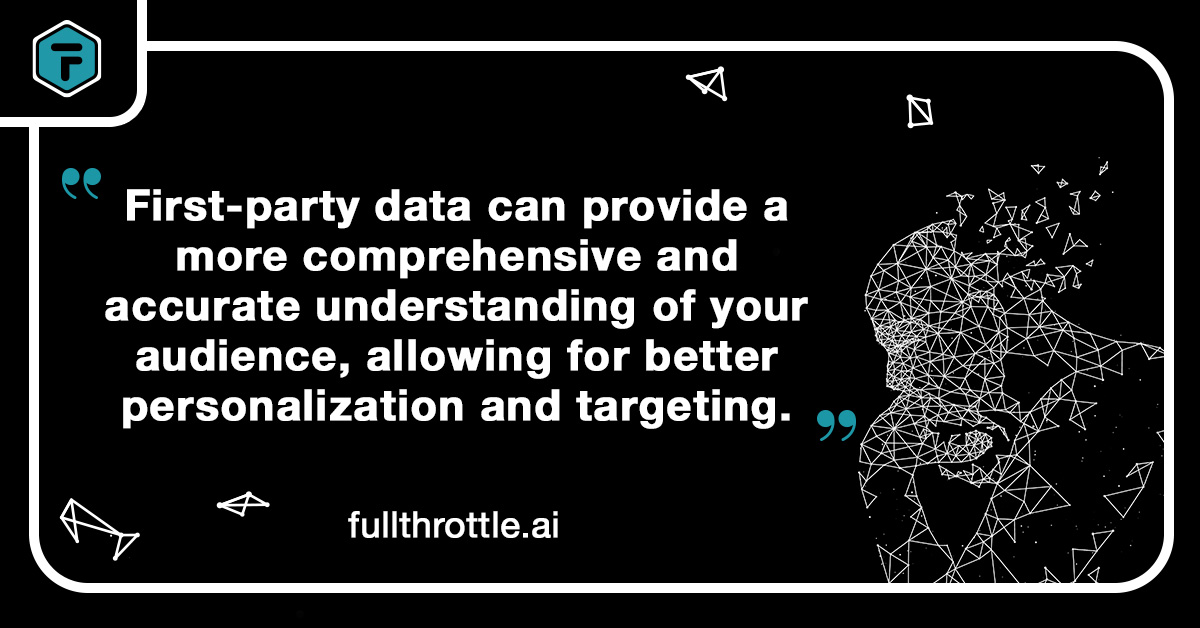
Why Ghost-Hunting With Third-Party Data Is a Losing Strategy
Change is the name of the game for marketers. Recently, the potency of programmatic advertising, a mainstay of online marketing for years, has started to falter. Agencies and brands alike are grappling with this shift and working to adjust their strategies. Let's delve into the changing trends and outline how agencies can adapt to the evolving advertising world.
Key Takeaways:
- Programmatic advertising is less effective due to regulatory changes and the dwindling reliance on third-party cookies.
- The concept of a 'ghost audience' symbolizes the increasingly thin and hard-to-reach target demographic using traditional programmatic methods.
- First-party data provides a more accurate and comprehensive understanding of the audience, enabling better targeting and personalization.
- Investment in third-party programmatic advertising can be better utilized by reallocating some of the budget towards first-party data solutions.
- Programmatic advertising is evolving and pivoting towards a more data-centric, audience-focused approach.
Ghost Audiences Are Hurting Programmatic Advertising
Programmatic advertising, while once highly effective, is losing its sheen. This method, primarily dependent on third-party data for decision-making in media buying, is seeing a gradual decline in returns. As third-party data becomes less reliable and harder to access due to increasing regulation and changing user behaviors, we're left with what's been dubbed a "ghost audience." Just like ghosts, the group of people brands are targeting with programmatic ads is getting harder and harder to find.
The “ghost” part of the term really helps to illustrate this — the audience seems to be disappearing right before our eyes, making it tough to grab their attention. Despite considerable financial investments, the crowd is thinning. Brands are pumping more money into a shrinking audience, which is neither sustainable nor economically sound.
First-Party Data: The Future of Advertising
First-party data is the new star of the show. This change is largely driven by increasing privacy regulations and users' growing desire for personalized experiences.
The use of first-party data, collected directly from your audience, can provide a more comprehensive and accurate understanding of your audience, allowing for better personalization in advertising and segmented audience targeting. Most importantly, this data is transparent, helping to build trust with your audience — something third-party data simply can't deliver.
Testing and Transition: The Way Forward
A shift from programmatic advertising to a first-party data focus doesn't need to be abrupt. Instead, consider reallocating a portion of the programmatic budget towards first-party data solutions. This approach allows for testing and marketing experimentation to see which audience targets are most responsive.
Current trends and the clear increase in the value of first-party data show key results of improved effectiveness and better ROI. We see it here at fullthrottle.aiTM every day.
The Future of Programmatic: An Altered Landscape
Let’s look ahead to the future of programmatic advertising in its weakened state. What do we think it’ll look like? In short: we think it will look dramatically different for programmatic advertising. Though it will likely still exist in some form, its role and relevance will be considerably different.
The industry's focus will have shifted towards activating first-party audiences, leading them through the marketing funnel in more omnichannel, personalized ways that are firmly focused on achieving tangible business outcomes. Adapting to this new world of advertising will be a critical challenge for agencies and brands.
Leverage First-Party Data With fullthrottle.aiTM
As programmatic advertising evolves, the need for an end-to-end, first-party data-powered solution becomes clear. That's where fullthrottle.aiTM comes in. Our platform enables agencies, brands, and publishers to effectively identify and market to real, in-market leads by resolving website visitors into first-party addressable households.
These first-party data sets can be used to build and generate previously unreachable audiences without dependence on cookies or MAIDs. These audiences can be used in tandem with traditional retargeting and programmatic methods to boost and future-proof marketing efforts. By enabling brands to own and transform their data, fullthrottle.aiTM is helping over 6,000 businesses across the United States to navigate the changing digital advertising landscape and prepare for a cookieless world.
If you're ready to take your digital marketing strategy to the next level, book a demo with us.


